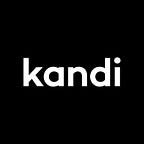Corporate colours are incredibly important in branding. It is a fundamental element in a brand identity and is one of the most instantly recognisable and easily memorable elements of a corporate visual identity. The choice of colour can reinforce the personality of a brand and the qualities of what it offers.
When we think of well-known brands, their use of colour often comes to mind. That is how memorable the choice of colour can be. But how do we go about choosing the right colour? And why is colour important to your brand?
Why colour is important to your brand
Colours have an emotional effect. When we talk about colour in branding or marketing we often talk about colour psychology or colour theory. Colour psychology is the study of how colours affect perceptions and behaviours. In branding, colour psychology focuses on how colours impact consumers’ perceptions of a brand, and if they persuade consumers to consider brands, or make a purchase over others.
Research has shown that colour increases brand recognition by up to 80%. Because our brains prefer immediately recognisable brands, colour can be used as an element to achieve this.
It also shows that consumers make a subconscious judgment within 90 seconds of initial view. And up to 90% of that assessment is based on colour alone.
A less obvious colour can also help differentiate your brand. Depending on your market, differentiation can be crucial. And by choosing a less obvious colour you can differentiate from your competitors.
So as you can see, colour is important to branding as it has an immediate impact.
How to choose the right colour for your brand
There are many books and articles to read on what colours to use and why, but colour preference and associations are also a highly personal one. Personal preference, experiences and culture, all effect how we feel about a particular colour. Which makes it practically impossible to outline universal guidelines on how specific colours makes us feel and in turn be used in branding. However, there are many general explanations on colour meanings and the effect that they can have on people, like red stands for passion, yellow is happy, blue is trustworthy, purple is luxury, and so on. To some extent these meanings can be true and helpful in positioning your brand. But it doesn’t take into consideration personal preference, experiences or cultural values. So understanding your market, your customers, and the personality you want your brand to have is vital in making the right choices.
Colour terms explained
Designers can sometimes forget that clients don’t know the meaning of design terms. It really isn’t’ the clients job to know, but sometimes it might be helpful in understanding some terms to help make the right decisions. Here’s a list of colour related terms that we sometimes use.
RGB
RGB is a colour model made up of red, green and blue light, added together in various ways to create colours. RGB is used for on-screen.
HEX
A HEX code is a colour identification system that uses a six-digit number to specify colours, used in HTML and CSS (web design).
CMYK
CMYK is a colour model used for print purposes, made up of cyan, magenta, yellow and key (black).
Pantone
Pantone is a system for matching colours, using specifying printing inks: Pantone colours. Every hue is given a specific number, for ease of reference and the ability to reproduce the same colour over and over again without any difference. Pantone colours are picked using a Pantone book. It is sometimes more affordable to print in Pantone than CMYK, as CMYK is made up of four screens, but Pantone inks are also more expensive. It is generally used when you want to be very specific on a colour, making sure it is the same every time you print.
Palette
A colour palette describes a range of selected colours used for a brand or in a specific design.
Hue
A hue is essentially a way to describe a colour, like red, blue and yellow.
Tint
A tint is a lightened or darkened version of a hue, done by adding white or black, making the hue less or more intense.
Saturation
Saturation describes the amount of colour intensity.
Temperature
Colour temperature refers to the coolness or warmth of a colour. Cool colours are blue, greens, indigoes, violets etc. Warm colours are red, yellow, and oranges.
Gradient
A gradient is a gradual change between colours or fading into transparency. The two common types of gradients are radial or linear.
Opacity
Opacity refers to an element being transparent. The lower the opacity (0%), the more transparent the element is, and a high opacity (100%) will make the object solid.
Colour harmonies
Monochrome colour scheme uses a single colour with varying shades.
Analogous colour scheme uses colours next to each other on the colour wheel.
Complementary colour scheme uses colours on the opposite ends of the colour wheel.
Triadic colour scheme uses three unique colours that are equally spaced on the colour wheel.
Colour inspiration sites and references
Colorhunt
A free and open platform for colour inspiration with thousands of colour palettes
Coolors
Super fast colour schemes generator
Pantone
Pantone colour inspiration and trends
Canva
Generate colour palettes from your photos
Hex to RGB
Hex to RGB converter
Muzli colour palette generator
Create colour palettes and see them live in action
This article was originally published on kandi.co.za
